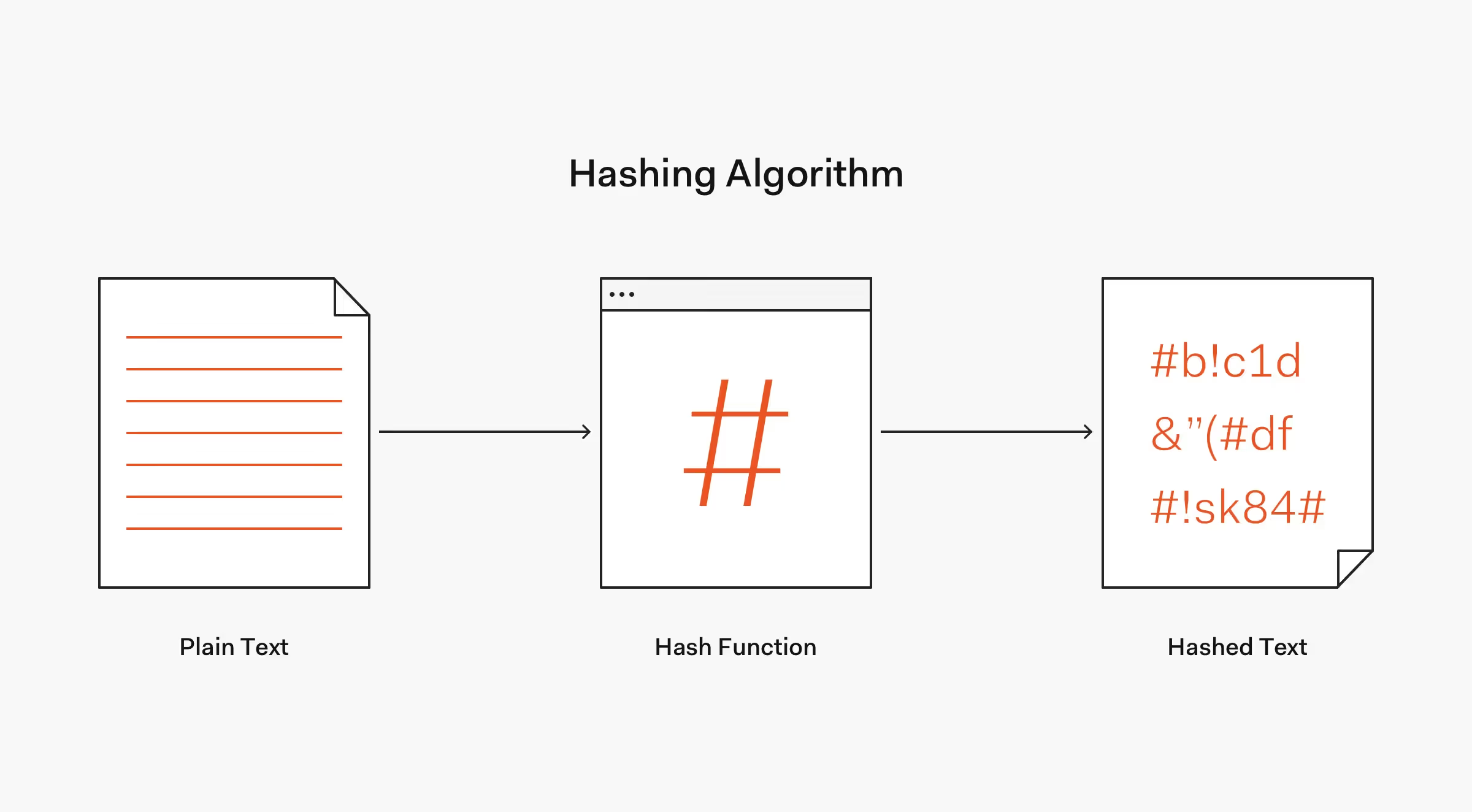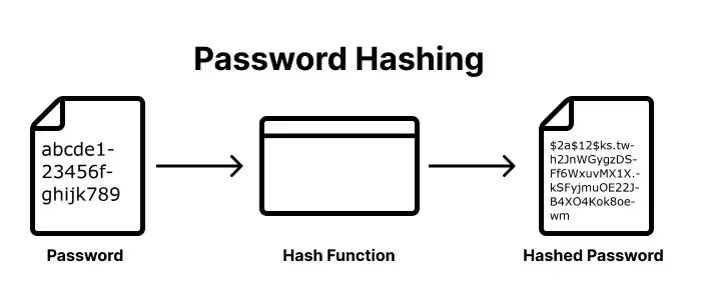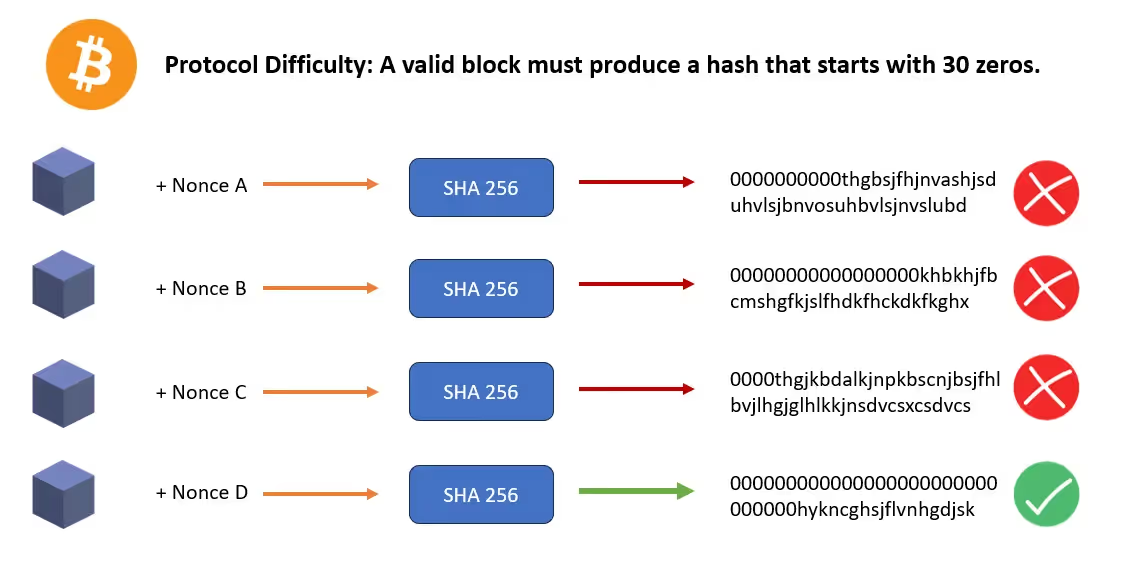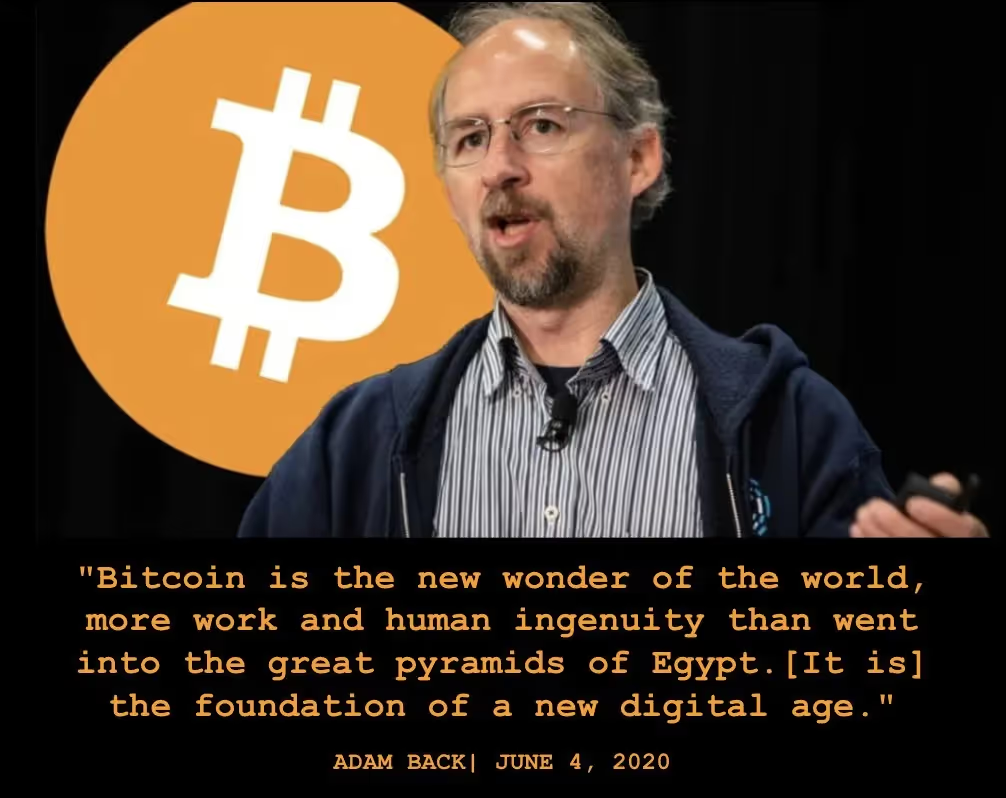Bitcoin More Than 50 Years in Development
Bitcoin More Than 50 Years in Development

In this article:
This week we wanted to help provide a wider context to where Bitcoin came from and what it’s all about. You see, Bitcoin didn’t just emerge from the ether in some sort of immaculate conception. It isn’t the brainchild of a lone genius operating in a total vacuum, creating completely novel technology.
Instead, Bitcoin is the culmination of more than 50 years of advancements in cryptography, privacy, and resistance to centralised control. Satoshi is clearly an incredibly talented developer and cryptographer, a genius even. But like every great innovator, it’s clear that he drew inspiration and built upon the work of others that came before him.

The journey toward separating money and state has been a long one and many previous attempts have been made prior to Bitcoin. To date, each of these attempts has failed. Satoshi’s work builds upon decades of advancements in cryptography and his design draws on the many lessons from previous failed attempts to develop digital money free from Government oversight and control.
So who are the giants whose shoulders Satoshi stood upon in order to give birth to Bitcoin?
Read on to find out…
1970s – The Emergence of Public Key Cryptography
Before public key cryptography, cryptographic systems relied upon something known as ‘symmetric key cryptography’. This is where the same secret (private) key is used to both encrypt and decrypt a message. Given that both encryption and decryption use the same key, it requires both parties to have some secure method of exchanging it. It’s no use encrypting a secret message if the key you used becomes publicly known. The problem is, exchanging a secret key privately is extremely challenging over an open network like the internet, making it very difficult to develop secure communications.
A big step forward came in 1976 when Whitfield Diffie and Martin Hellman released a paper titled “New Directions in Cryptography” which introduced the concept of ‘public key cryptography’, also known as ‘asymmetric cryptography’. This innovation introduced the concept of key pairs: a public key for encryption and a private key for decryption. This would allow you to freely distribute your public key for people to encrypt messages to you with, but only you would have the private key needed to decrypt it. This completely revolutionised the field of cryptography and laid the foundations for secure communications even over insecure channels. The significance of Diffie and Hellman’s work can’t be overstated. Without asymmetric cryptography the development of secure communication technologies such as SSL/TLS for secure web browsing, SSH for secure remote access or PGP for encrypted email would not be possible.

The same is true of Bitcoin. Each participant in the Bitcoin network creates an asymmetric pair of cryptographic keys; a public one and a private one. The public key acts as a user’s ‘receive address’ for others to send funds to, while the corresponding private key is kept secret as it allows the owner to sign and authorise the spending of these funds. By digitally signing transactions with their private key, users can demonstrate that they are the authorised owner of a public key and spend the funds attributed to it. Other users on the network can then use the public key to verify that the digital signatures used to spend from it are authentic without ever needing the private key to be revealed.

Public Key Cryptography is one of the core components of Bitcoin’s design. It allows users to send Bitcoin to one another without the need for central authorities to grant accounts or verify that transactions are legitimate. Without it there would be no way for Bitcoin to create a trust-less and decentralised monetary system. Without decades of innovation in cryptography, Bitcoin wouldn’t be possible.
The Development of Cryptographic Hash Functions
Another core component of Bitcoin’s design is something called the cryptographic hash function. A hash function is simply an algorithm that takes any input, say a message, and transforms it into a random output in the form of a string of numbers and letters.

Hash functions have a few interesting and useful properties:
1) Every time you use the same input you will always get the same output.
2) It’s impossible to work out what the input was if you only have the output.
3) It’s impossible for two different inputs to have the same output.
Hash functions are often used for things like password storage on websites and apps. When you create a password, instead of storing it directly, a website will ‘hash’ it into a random string of numbers and letters. When you log back in, the website hashes the password you enter and compares it to the stored hash. This is an incredibly useful thing to be able to do. It means that even if the website’s database is compromised your password isn’t stored there, only the hash of it, and the attacker can’t work out your password from just its hash.

Hash functions first began development in the late 70’s shortly after the emergence of public key cryptography. Some of the earliest proponents include Ronald Rivest, who with Adi Shamir and Leonard Aldeman released the widely adopted RSA algorithm in 1977.

Over the next few decades hash functions would continue to grow and evolve until in 1993 we saw the emergence of the most famous and widely used hash functions, the Secure Hash Algorithms (SHA). These algorithms were developed by the USA’s National Security Agency (NSA) and are currently considered the most secure. They are used extensively in almost all aspects of digital security.

That’s right, the SHA-256 hashing algorithm that Bitcoin’s design relies on was developed by a government agency. Every now and then irony can be deliciously sweet.
SHA-256 and Proof-Of-Work (POW)
Bitcoin uses SHA-256 and a process referred to as ‘Proof of Work’ to secure its network and to ensure its ledger of transactions cannot be tampered with. Instead of transactions being processed and recorded by a central authority, through ‘Proof of Work’, Bitcoin offers any user the chance to add the next block of transactions to its ledger.
Users known as miners compete to do this by creating blocks from unconfirmed transactions and hashing their contents using SHA-256. If the output of this hash meets a certain threshold set by the Bitcoin protocol, then the block is valid and included in the ledger. If the hash does not meet the protocol’s required threshold, then the miner simply makes a slight change to something known as the ‘nonce’ of their block and tries again. Because the new attempt with is slightly different, its output is slightly different and could result in a hash that meets the protocol’s threshold.

Eventually, one of the miners will find a valid block and broadcast it to everyone else in the network. Other participants can verify its validity by hashing it themselves and seeing that the output does meet the protocol’s required threshold and contains valid transactions. If any miner tries to submit an invalid block the rest of the network will simply reject it. This process essentially creates a type of lottery. Nobody can be sure which miner will produce the next valid block and this allows Bitcoin to process transactions without a central authority calling all the shots.
But if mining Bitcoin is energy and resource intensive, why would users do all this work?
Well, the reason is because Bitcoin incentivises it. Any user who finds the next valid block is rewarded with fresh new Bitcoin. Bitcoin doesn’t need a third party to process transactions, instead it simply allows anyone to do it and incentivises them to do so.

Crucially, this process ensures that Bitcoin’s ledger cannot be tampered with. Finding the next Bitcoin block is highly competitive and requires a lot of computational work. The ‘proof of work’ required to find a valid block means that unless a single miner can ensure they win this lottery every single time, they cannot co-opt and control what is recorded in the ledger.
Many mistakenly think Satoshi must have discovered ‘Proof of Work’ alone. The Bitcoin whitepaper however tells a different story. If you read it, you’ll discover that Satoshi references a system called Hashcash, a cryptographic system proposed by Adam Back in 1997 as his inspiration. Hashcash used Proof of Work to deter email spam and DOS attacks, Satoshi simply adapted it for use in a monetary system to achieve distributed consensus.

What we can begin to understand then, is that without the several decades’ worth of innovation in cryptography that led to the creation of the SHA-256 algorithm, combined with the inspiration from Hashcash’s ‘Proof of Work concept’, Satoshi’s design for Bitcoin would not be possible. Bitcoin didn’t emerge from nothing; it has been a long time in the making…
Previous Attempts to Separate Money & State
As you might expect, Bitcoin is the not the first time that motivated men have attempted to finally separate money and state, wrenching us from the tyrannical grip of corrupt central banks and their obedient politicians. Let’s explore a handful of the attempts that came before Bitcoin:
The Liberty Dollar
Bernard von NotHaus, a prominent figure in the libertarian and alternative currency movements, created a new currency called the Liberty Dollar in the late 1990s as an alternative to the official U.S dollar. The Liberty Dollar was backed by silver and gold, and its supporters argued that it provided a more stable and secure form of money. However, in 2007, von NotHaus was charged by federal authorities with counterfeiting, conspiracy, and other offences. In 2011, he was convicted on various charges related to the production and distribution of the Liberty Dollar, and the currency was seized and taken out of circulation.

E-Gold
E-Gold is a similar story, but this time used a digital currency. Founded in 1996 by Douglas Jackson and Barry Downey, users could open accounts with E-Gold and use it to make online payments and transfers. E-Gold was allegedly backed by physical gold stored in vaults, and its operators claimed that it provided a secure and stable alternative to traditional currencies. Eventually however, E-Gold came under scrutiny from law enforcement agencies due to concerns about money laundering and illegal activities conducted using the platform. In 2007, federal authorities seized the assets of E-Gold and its operators, leading to the service being shut down.

Liberty Reserve
Liberty Reserve was a digital currency service founded in 2006 by Arthur Budovsky and Vladimir Kats, headquartered in Costa Rica. Its purpose was to provide users with a platform for transferring digital currency units, known as ‘LR dollars’, apparently backed by real-world currencies. It became popular quickly for its convenience and relative anonymity when facilitating international payments. This anonymity soon became a source of notoriety and in May 2013 US authorities shut down Liberty Reserve and arrested Budvsky and others involved with the service on charges of money laundering and unlicensed money transmission.

What’s clear from these three attempts is that all of them aimed to remove control of the money supply away from governments and central banks. Each was predicated on scarcity by being backed by precious metals and were clearly a reaction to the constant debasement of modern fiat currencies. What is also clear however is why these projects failed. First, they required users to trust the founders to genuinely hold the reserves they claimed to have. Risky business. Second, even if we assume the founders of these projects were trustworthy, their centralised models made them a far too easy target for Government agencies and were too easy to shut down.
So was Satoshi the first to realise that only a decentralised monetary system would be resistant to state capture?
Certainly not! It was also clear to others that the state would not accept any competition to its monetary authority and some projects had already started to explore more decentralised models for a monetary system to make it harder to shut down…
Nick Szabo’s Bit Gold
Nick Szabo’s ‘Bit Gold’ was a decentralised currency system proposed by computer scientist and cryptographer Nick Szabo as early as 1998, long before the advent of Bitcoin. It is often considered to be one of the earliest conceptual precursors to Bitcoin.
Bit Gold’s proposed design shares a lot of similarities with Bitcoin. Users would use public key cryptography to sign and validate transactions and it used ‘Proof of Work’ to achieve consensus across decentralised network participants to prevent double spending. It’s design also incorporated a capped supply and an ever-decreasing issuance rate, just like Bitcoin. Whilst Szabo’s Bit Gold was never launched as a functional system its design almost certainly had an influence on Bitcoin’s design.

Wei Dai’s B-Money
Nick Szabo wasn’t the only one thinking about decentralised monetary systems. In 1998 another computer scientist Wei Dai also pioneered a proposal for a decentralised digital currency system called B-money. Again, this proposed design shares undeniable similarities to Bitcoin’s design. Just like Bitcoin, its operation would require no trusted intermediaries with participants using public key cryptography to sign and authenticate transactions. New units of B-money would also be created through a process called mining to reward users who contributed computational resources and validated transactions. The similarities between Bitcoin and B-money are uncanny with B-money even emphasizing the importance of privacy and allowing participants to transact pseudonymously without revealing their identity.
Similarly to Szabo’s Bit Gold B-money was never implemented as a functional system but there is no doubt that Satoshi’s design for Bitcoin was heavily influenced by Wei Dai’s work as his paper is even cited in the references section of Satoshi’s whitepaper.

Stateless Money – Crossing the Finish Line
Bitcoin represents the culmination of more than 50 years of innovation by some of the world’s most talented computer scientists and cryptographers. The examples cited here don’t even scratch the surface of Bitcoin’s pre-history and to true Bitcoin historians the omissions made in this article to attempt to keep it to a sensible length will be glaring.
“He didn’t even mention Hal Finney’s RPOW (Reusable Proof of Work) concept?!?”

Whilst we couldn’t cover everything in minute detail, what we hope you take away is that separating money and state isn’t a brand-new idea, Bitcoin simply emerged as the best design and implementation for it. The point is, Bitcoin has been a long time coming. Perhaps if more people understood Bitcoin’s pre-history, they would view it as the true innovation that it is, rather than just a spurious attempt to make ‘internet money’.
Whilst it’s not essential to have an intimate knowledge of every twist and turn of cryptography’s history, having an awareness of it should certainly help with your conviction. The race for stateless money has been running for 50 years, Bitcoin is simply crossing the finish line.
Cross The Finish Line with The Bitcoin Way
If you’re ready to cross the finish line and adopt stateless money, then The Bitcoin Way are here to help. We can give you all the knowledge you need to become a confident Bitcoin user in a fraction of the time it would take you to learn it all by yourself.
Book a call with our experts today and let us show you just how easy adopting Bitcoin can be. It’s never too late to start, but starting is essential if you ever want to cross the finish line.
